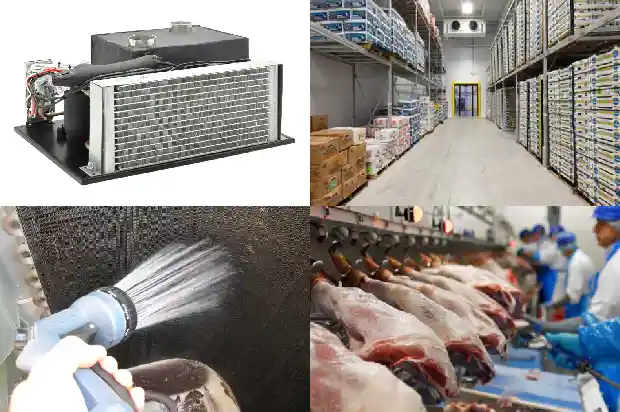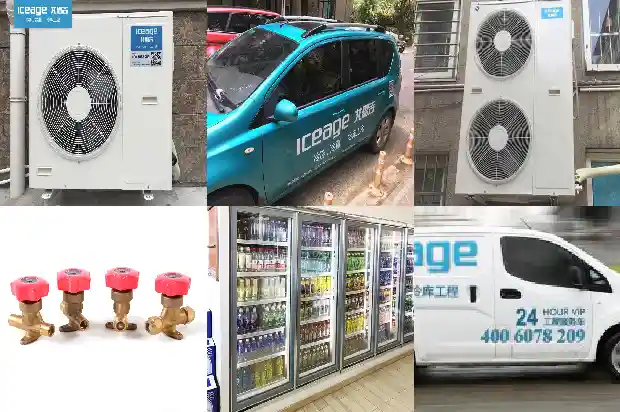Operating Principle and Standard Installation Steps of Multi - split Systems in Refrigerant Air - conditioning Systems
2025-01-05
I. Multi - connected Unit System and Working Principle
The multi - connected unit, commonly known as "one - to - multiple", refers to a system where one outdoor unit is connected to two or more indoor units through pipes.
The multi - connected unit system has many advantages such as energy - saving, comfort, and stable operation.
In order to achieve the goal of energy - saving, the multi - connected unit realizes the variable - capacity operation of the compressor and the system through the effective control of the refrigeration medium flow rate.
Currently, the mature technologies include:

The multi - connected unit system has many advantages such as energy - saving, comfort, and stable operation.

In order to achieve the goal of energy - saving, the multi - connected unit realizes the variable - capacity operation of the compressor and the system through the effective control of the refrigeration medium flow rate.
Currently, the mature technologies include:
- Variable - frequency multi - connected unit technology
- Digital scroll multi - connected unit technology
Variable - frequency multi - connected unit technology: Variable - frequency multi - connected unit technology refers to the way the outdoor main unit of a single - pipeline one - to - multiple space heat pump system adjusts its output capacity. The outdoor main unit adjusts the number of operating compressors according to the change of indoor air - conditioning load, so that the motor power corresponds to the load change. By changing the input frequency of the variable - frequency compressor through the variable - frequency device, the rotational speed of the compressor is changed. The two cooperate to achieve linear adjustment of cooling capacity and energy. In addition, the change of indoor temperature is regulated by the electronic expansion valve.
Digital scroll multi - connected unit technology: Digital scroll technology has a unique performance called "axial flexibility". This performance allows the fixed scroll plate to move a small amount axially, ensuring that the fixed scroll plate and the moving scroll plate are always jointly loaded with the optimal force. The optimal force that combines the two scroll plates under various operating conditions ensures the high efficiency of digital scroll technology.
Digital scroll operation is divided into two stages: the "load state", in which the solenoid valve is normally closed; and the "unload state", in which the solenoid valve is open. In the load state, the compressor works like a conventional scroll compressor, delivering the full capacity and refrigerant mass flow rate. [Source: Refrigeration Encyclopedia]. However, in the unload state, no capacity and refrigerant mass flow rate pass through the compressor. Variable - capacity refrigerant control is achieved through the periodic loading and unloading of the compressor. Digital scroll technology started relatively late in China, and the technology is not yet very mature.
Digital scroll operation is divided into two stages: the "load state", in which the solenoid valve is normally closed; and the "unload state", in which the solenoid valve is open. In the load state, the compressor works like a conventional scroll compressor, delivering the full capacity and refrigerant mass flow rate. [Source: Refrigeration Encyclopedia]. However, in the unload state, no capacity and refrigerant mass flow rate pass through the compressor. Variable - capacity refrigerant control is achieved through the periodic loading and unloading of the compressor. Digital scroll technology started relatively late in China, and the technology is not yet very mature.
II. 8 Steps of Multi - connected Unit Installation Specifications
- Indoor Unit Placement:
The first step for the construction team to enter the site is to hoist the indoor unit. Paying attention to the following two points can avoid subsequent problems.
① The distance between the indoor unit and the ceiling should not be less than 1 centimeter to prevent resonance between the machine and the ceiling during operation.
② The indoor unit must be hoisted in a horizontal position. After installation, a special tool is needed to measure whether the machine is horizontal. - Installation of Refrigerant Copper Pipes:
This is the most important part of the central air - conditioning installation process!
① All welding points should be at the connection between the copper pipe and the branch pipe, and there is no welding between copper pipes.
② During the welding process, nitrogen must be injected into the copper pipe.
Related Articles
- Common Operating Faults and Treatment Methods of Centrifugal Compressors
- Principles, Components and Heat Recovery of Modular Units
- What are Refrigeration Equipment? What's the Principle of Chillers?
- What Is the Working Principle of Refrigeration Equipment?
- Working Principle of AC Inverter and DC Inverter Air Conditioners
- What's the principle and function of air energy?
- Principles of Refrigeration Systems and Functions of Components Explained
- Working Principle and Control Logic of Centrifugal Compressor
- Function and Working Principle of Subcooler
- Fault Analysis of Working Principle of Screw Chiller Unit
- Working Principle of Economizer for Refrigeration Compressor
- Principle of Multiple Storages in One Unit and Evaporation Pressure Regulation Methods
- Principle and Refrigeration Process of Piston Refrigeration Compressor
- Characteristics and principles of air-cooled and water-cooled units
- Air-source heat pump: Principle of cooling and heating in one machine
- Industrial screw water chiller working principle
- Water Cooled Unit Principle of Operation and Parameter Failure Analysis
- The principle of air conditioning refrigeration
